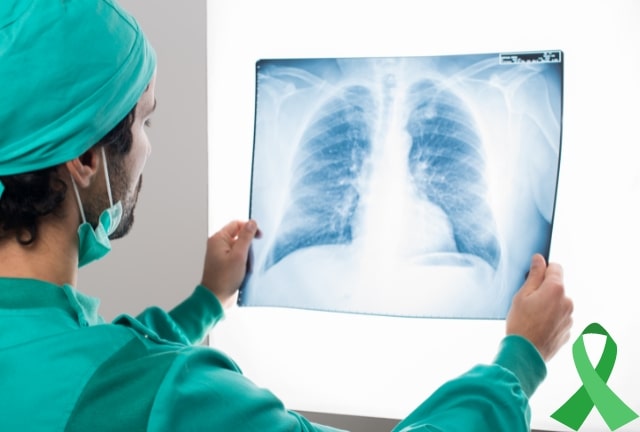As a healthcare professional, you understand the importance of accurate coding and documentation in patient care and reimbursement processes. Non-small cell lung cancer (NSCLC) is a prevalent and complex condition that requires precise coding to ensure optimal patient outcomes and financial coverage. In this comprehensive guide, we will delve into the intricacies of NSCLC ICD-10 coding, exploring the latest updates, key components, and coding guidelines for 2024. By the end of this guide, you will be equipped with the knowledge and expertise to navigate the complexities of NSCLC coding, ultimately improving patient care and reimbursement processes.
Understanding Non-Small Cell Lung Cancer
Non-small cell lung cancer (NSCLC) is a significant health issue characterized by the uncontrolled growth of abnormal cells in the lung tissue. Understanding its intricacies is crucial for providing optimal patient care and accurate reimbursement.
Types of Non-Small Cell Lung Cancer
NSCLC encompasses several different types of lung cancers, each with unique features and implications for diagnosis and treatment:
| Subtype | Description |
|---|---|
| Adenocarcinoma | Most common, especially among non-smokers, typically starting in the outer parts of the lungs. |
| Squamous Cell Carcinoma | Often develops in the central chest area, strongly associated with smoking and exposure to harmful substances. |
| Large Cell Carcinoma | Less common, tends to grow quickly and spread early, making treatment planning challenging. |
Symptoms and Diagnosis
Lung cancer symptoms often include a persistent cough, chest pain, and difficulty breathing. Diagnosing NSCLC typically requires comprehensive evaluation and imaging techniques, such as CT scans, biopsies, and imaging studies. Timely medical intervention is key to managing your health effectively.
The Significance of TNM Staging and Clinical Information
The TNM staging system categorizes cancer based on tumor size, lymph node involvement, and metastasis. This classification helps determine the extent of NSCLC and guides treatment decisions. Gathering relevant clinical details, such as patient history, symptoms, and laboratory test results, is crucial for proper coding, billing, treatment decisions, and reimbursement processes.
ICD-10 Coding for NSCLC
Accurate coding is crucial for ensuring proper reimbursement and patient care. The ICD-10-CM coding system offers a standardized approach to classifying diseases and procedures in healthcare. For NSCLC, the specific ICD-10-CM code C34.90 is vital for precise documentation and billing.
Step-by-Step Guide to Coding NSCLC
The process of coding NSCLC can be simplified by following a systematic approach:
| Step | Description |
|---|---|
| 1 | Identify the NSCLC subtype through diagnostic reports. |
| 2 | Utilize appropriate ICD-10 codes based on subtype. |
| 3 | Document staging and any metastases present. |
| 4 | Cross-reference codes with current coding guidelines. |
Common Coding Errors to Avoid
Coding errors can lead to significant repercussions, including claim denials. To prevent errors, meticulously check the documentation to ensure that you’re using the correct code for the specific subtype of lung cancer. Verify that staging and metastasis details are captured correctly.
Updates in the 2024 Edition
The 2024 edition of ICD-10-CM will take effect on October 1, 2023. Staying updated on the recent changes, especially those related to NSCLC, is crucial. These updates may affect claims submission and reimbursement processes. Review the 2024 edition updates to improve your ability to document and code NSCLC cases effectively.
The Role of Tissue Analysis in Non-Small Cell Lung Cancer Treatment
Tissue analysis is vital for accurate diagnosis and effective treatment of NSCLC. Pathologists examine tissue samples to identify the specific subtype of NSCLC, which is crucial for creating personalized treatment plans.
Importance of Quality Tissue Samples
Samples obtained through procedures like bronchoscopy and transthoracic needle biopsy are important for thorough analysis. These techniques allow healthcare providers to gather enough material for precise diagnosis and tailored treatment approaches.
Collaboration for Optimal Care
A multidisciplinary approach ensures that healthcare professionals consider all aspects of a patient’s condition, from diagnosis to treatment and beyond. Collaborative decision-making among pathologists, pulmonologists, medical oncologists, and other specialists optimizes patient care and outcomes for this complex disease.
Conclusion: Enhancing Patient Care through Accurate NSCLC Coding
By understanding the intricacies of non-small cell lung cancer ICD-10 coding, you can streamline the billing process, contribute to comprehensive patient care, and stay updated on the latest advancements in disease management. Accurate documentation and precise coding are vital components in the fight against non-small cell lung cancer, and continued education is key to providing optimal care for patients. This knowledge not only ensures accurate billing and compliance but also plays a pivotal role in delivering optimal care for your patients facing this challenging diagnosis.


